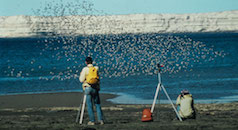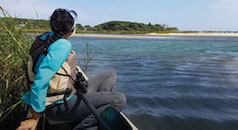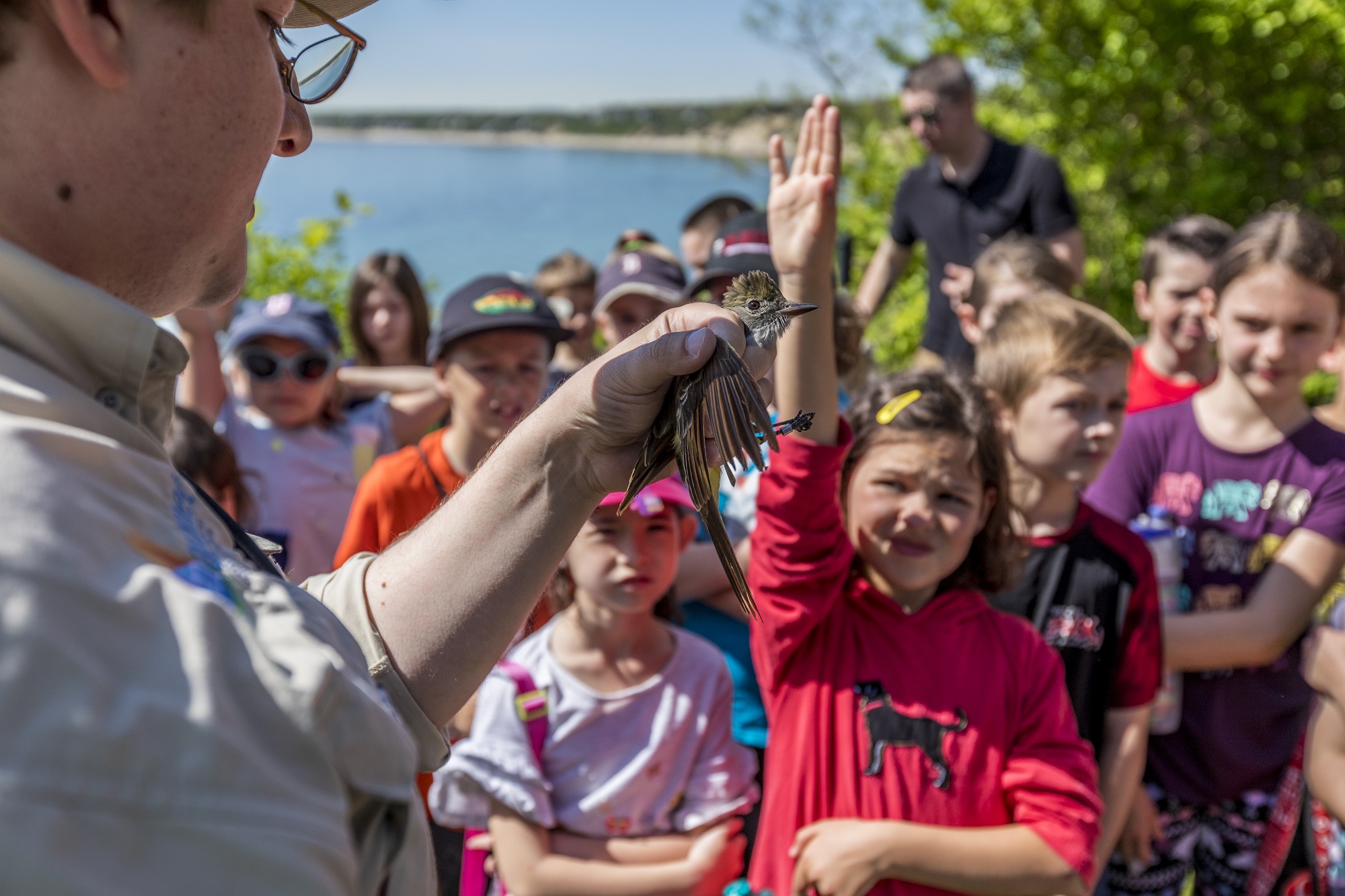The Yukon Delta National Wildlife Refuge is thought to support one of the largest and most diverse populations of breeding shorebirds in the Western Hemisphere. However, there has never been a complete survey to measure breeding populations there—until now.
This May, Manomet’s Stephen Brown and Brad Winn will join five scientists from the U.S. Fish and Wildlife Service to immerse themselves in this immense wetland wilderness and implement the largest survey of breeding shorebirds ever conducted. The full survey will take two seasons to complete and is part of the Program for Regional and International Shorebird Monitoring (PRISM) which plans to cover all prime shorebird habitats in the North American Arctic.
An aerial shot of the Yukon River Delta. This expansive wetland habitat supports millions of nesting waterbirds, including one of the highest densities of nesting shorebirds in the world. Image by Brad Winn
“This survey is huge in terms of scope, importance, and difficulty,” said Stephen Brown, Director of Manomet’s Shorebird Recovery Program. “Although the area is known to be critical to shorebirds, there has never been a comprehensive survey because it is so large and remote. The project requires extensive planning and expertise to execute, and we are excited to take on this challenge with our colleagues.”
The survey will last fourteen days and traverse much of the Refuge’s nineteen million acres. In order to cover so much land so quickly, the group will split up into two teams and will use two small helicopters to travel to approximately 24 randomly selected plots each day. Each researcher will have one hour and fifteen minutes to cover 40 acres on foot, while capturing all signs of breeding shorebirds. Once the time is up on each plot, the helicopter will circle back, pick up the biologists and transport them to the next plot.
Walking 40 acres in rough Arctic terrain is a challenge. How will the researchers accurately count shorebirds at the same time? Shorebirds are usually quite difficult to see, but the surveys will occur when shorebirds are the most active, during their brief, but intense, mating season.
Buff-breasted Sandpiper doing his mating display in Alaska’s Canning River Delta. This is an example of shorebirds’ unusual behavior during their mating season. Video by Ian Davies.
For about two weeks every year, shorebirds sing like song birds and soar like raptors in order to attract a mate and defend a territory. These rarely observed behaviors will allow our biologists to make estimates of the numbers of pairs of each species per plot of tundra. Timing is crucial to the success of this study as the birds will be incredibly difficult to find once they begin to incubate their four-egg nests.
“This project is only possible because everyone was able to step up to the challenge at the same time,” said Brown. “National Fish and Wildlife Foundation’s new Atlantic Flyway Shorebird Initiative has brought a significant amount of funds for conservation projects, but before plans are in place, accurate baselines need to be established, and data from this survey will help us measure the impacts of future conservation work.”

Semipalmated Sandpiper Aerial Display. Image by Brad Winn
This survey will provide us with a deeper understanding of shorebird population trends. Stressors like climate change, mineral extraction, and oil, gas and wind development are projected to impact the Arctic in the future. By establishing an accurate baseline, it will be possible to track the effectiveness of conservation efforts as well as the effect of these external pressures on shorebird populations.
Grants from the U.S. Fish and Wildlife Service’s Inventory and Monitoring Program and the National Fish and Wildlife Foundation made this important project possible, but matching funds are still needed. If you want to help fuel important research, contact Stephen Brown or make an online donation here.
If you are excited about this upcoming adventure, make sure to keep yourself updated on the team’s travels through our shorebird science blog. You can expect the first blog post to go live right before the team leaves for the Yukon on May 12 and the first day of surveying will begin on May 15.





 Back to all
Back to all